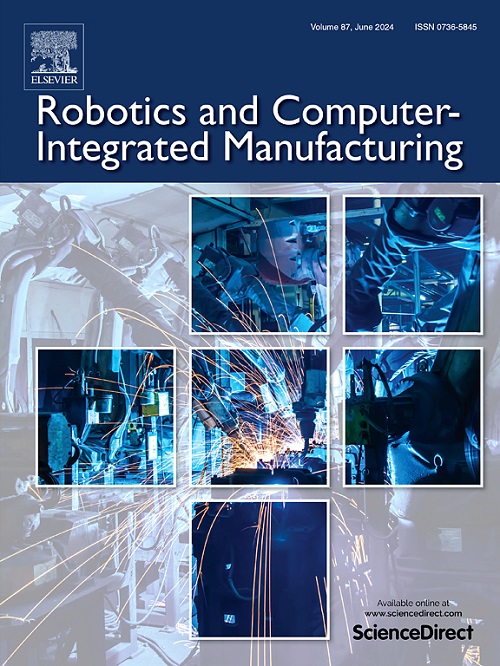Robotic hand–eye calibration utilizing limited geometric features object
IF 11.4
1区 计算机科学
Q1 COMPUTER SCIENCE, INTERDISCIPLINARY APPLICATIONS
引用次数: 0
Abstract
Hand–eye calibration is essential for intelligent robots to accurately perceive their environment, primarily focused on determining the transformation matrix between the robot flange coordinate system and the 3D sensor coordinate system. However, current robot hand–eye calibration methods heavily depend on costly specialized calibration objects, such as calibration boards and spheres, which complicate the calibration process and hinder the robot’s ability to perform self-calibration at any time and in any location. To address this issue, this paper proposes a novel robot hand–eye calibration method that utilizes the reconstruction of common objects with limited geometric features. Specifically, a point cloud feature description method that integrates eigenvalue entropy is introduced to extract feature points from multi-pose point clouds of these objects. Subsequently, a registration strategy based on the random sampling consensus of partitioned point clouds is employed for the coarse registration of the point cloud, estimating the initial hand–eye relationship, followed by iterative optimization through fine registration to determine precise hand–eye parameters. Extensive experimental results demonstrate that the proposed method offers a simple and efficient calibration process, eliminates reliance on specialized calibration objects, and achieves calibration accuracy comparable to that of high-precision calibration boards, thereby showcasing the advantages of the proposed approach.
基于有限几何特征的机器人手眼标定
手眼标定是智能机器人准确感知周围环境的关键,主要是确定机器人法兰坐标系与三维传感器坐标系之间的变换矩阵。然而,目前的机器人手眼校准方法严重依赖于昂贵的专用校准对象,如校准板和球体,这使得校准过程复杂化,并且阻碍了机器人在任何时间和任何位置进行自校准的能力。为了解决这一问题,本文提出了一种利用有限几何特征重构常见物体的机器人手眼标定方法。具体来说,引入了一种融合特征值熵的点云特征描述方法,从这些目标的多姿态点云中提取特征点。随后,采用基于分割点云随机抽样一致性的配准策略对点云进行粗配准,估计初始手眼关系,再通过精细配准进行迭代优化,确定精确的手眼参数。大量的实验结果表明,该方法提供了一个简单有效的校准过程,消除了对专门校准对象的依赖,并且可以达到与高精度校准板相当的校准精度,从而展示了该方法的优势。
本文章由计算机程序翻译,如有差异,请以英文原文为准。
求助全文
约1分钟内获得全文
求助全文
来源期刊
CiteScore
24.10
自引率
13.50%
发文量
160
审稿时长
50 days
期刊介绍:
The journal, Robotics and Computer-Integrated Manufacturing, focuses on sharing research applications that contribute to the development of new or enhanced robotics, manufacturing technologies, and innovative manufacturing strategies that are relevant to industry. Papers that combine theory and experimental validation are preferred, while review papers on current robotics and manufacturing issues are also considered. However, papers on traditional machining processes, modeling and simulation, supply chain management, and resource optimization are generally not within the scope of the journal, as there are more appropriate journals for these topics. Similarly, papers that are overly theoretical or mathematical will be directed to other suitable journals. The journal welcomes original papers in areas such as industrial robotics, human-robot collaboration in manufacturing, cloud-based manufacturing, cyber-physical production systems, big data analytics in manufacturing, smart mechatronics, machine learning, adaptive and sustainable manufacturing, and other fields involving unique manufacturing technologies.

 求助内容:
求助内容: 应助结果提醒方式:
应助结果提醒方式:


